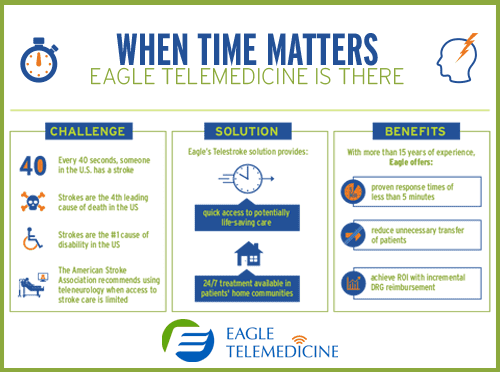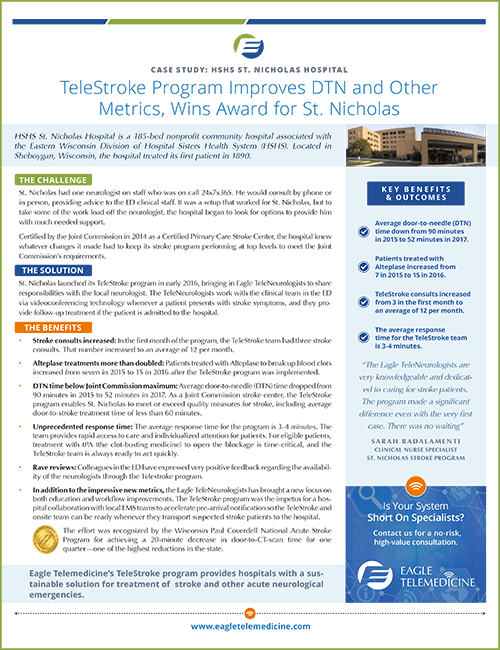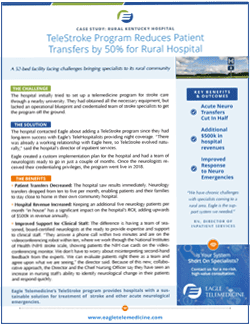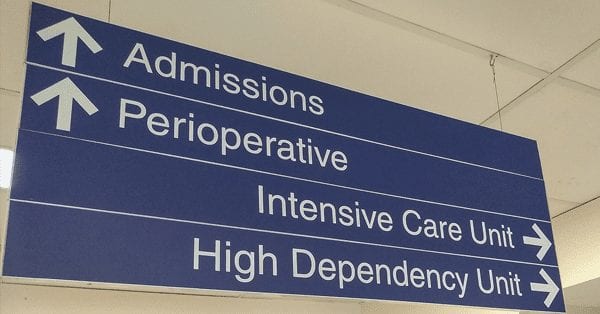Telemedicine stroke care focuses on acute care when time means preserving the patient’s brain function. Eagle TeleNeurologists have an impressive track record of improving hospital metrics through TeleStroke programs:
- An average response time of 3.5 minutes
- An average TeleStroke diagnosis and treatment time of less than forty minutes
We offer a top-notch stroke telehealth services that can make even the most remote hospital a center for quality neurological care. For non-emergent neurology patients, Eagle offers TeleNeurology services.



